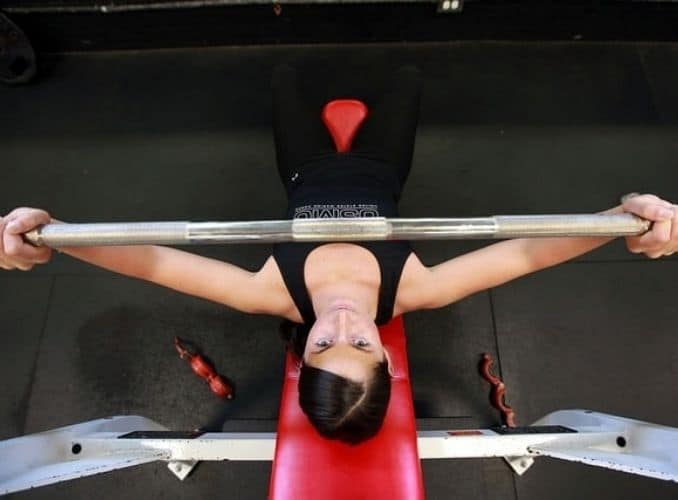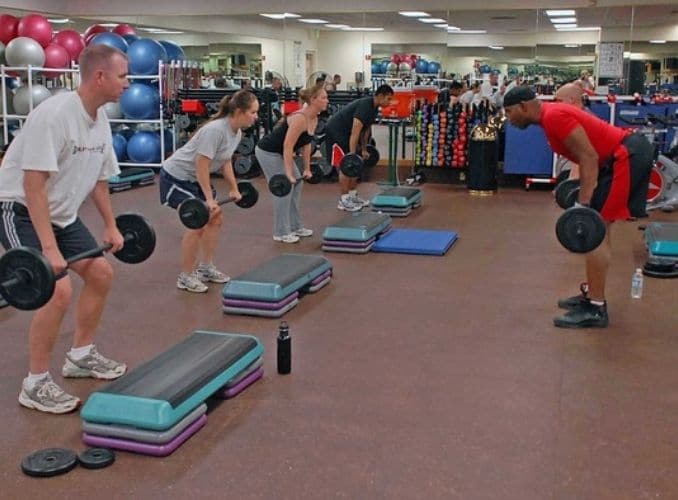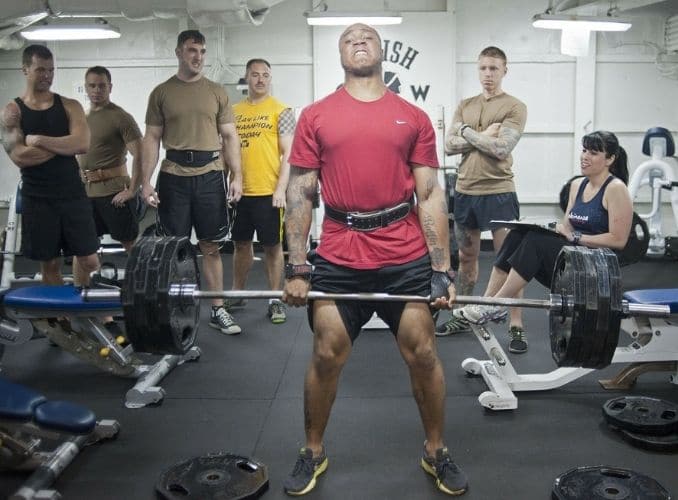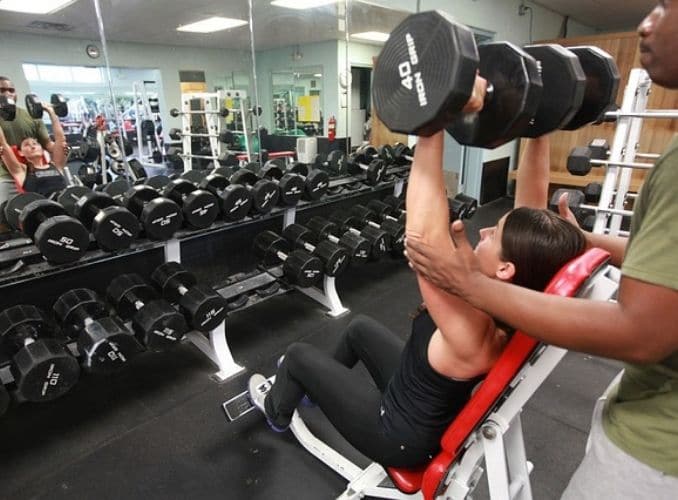
One of our readers recently asked us about increasing muscle as a diabetic: “My biggest challenge is increasing my muscle without affecting my blood sugar,” the reader wrote. “I am diabetic, which puts a restriction on my carb intake and carbs are necessary to increase strength and build muscle.”
People with diabetes indeed face unique challenges when it comes to building muscle, but that doesn’t mean it can’t be done. We offer some tips below on how to reach your fitness goals while still keeping your blood sugar levels in check.
What Does It Take to Build Muscle?
First, let’s review what the body needs to build muscle. Although there are many theories and methods for increasing your muscle mass, there are some things they all must have in common to produce results.
1. You Must Challenge the Body
If you don’t give the body a reason to grow, it won’t. That means you have to challenge it. If you lift the same weight for the same reps week after week, your body will have no reason to build up any muscle to handle the job.
The key to muscle growth, then, is to push yourself beyond your comfort zone — lifting progressively heavier loads. When you get to your last repetition, you should be tired enough to know you couldn’t do one more. Then, your body will rise to the challenge so you’re prepared for the next time around, after which you can increase the challenge again.

2. You Must Give Your Body the Nutrients it Needs
The body uses certain nutrients as building blocks to create new muscle:
- Protein: Protein builds and maintains muscles, providing the body with essential amino acids for creating new muscles after vigorous exercise. Maintaining current muscle mass takes a lot less protein than building new muscle — if you’re in a muscle-building program, you need to increase your protein intake.
- Carbohydrates: These provide the body with the energy it needs to manage those workouts you’re going through and to replenish the energy stored in the muscles. The body converts the carbs you eat into glycogen, which is the primary fuel stored in your muscles to power your workouts. If you don’t have enough carbs, your body may not have the energy it needs to lift those weights, or it may tap into your protein stores for fuel, which will rob the muscles of the protein they need.
- Fat: Fat is important for providing energy when the body is at rest and also helps supply energy to muscles during activity. It aids in the metabolism of many nutrients, including vitamins A, D, E, and K. Fat is also critical for producing hormones like testosterone, which helps promote muscle growth.
- Water: The muscles are made up primarily of water, which means you need to be sure you’re replenishing water during and after your workouts. Water also helps your body convert fat into energy and will make fuel-burning more efficient.
3. You Must Give Your Body Rest
After a tough workout, the body must have rest to build new muscle. If you work out again too soon, you’ll break the muscle down rather than build it up. A general rule of thumb is to train each muscle group no more than once or twice a week, alternating between groups and taking certain days off in between.
It’s also important to get the recommended seven to eight hours of sleep at night as that is when the body is most active in its repairing and building activities and when most of your hormones are released, promoting growth and recovery.
The Benefits of Building Muscle for Diabetics
People who are living with diabetes — or even those who want to prevent it — can benefit greatly from having more muscle mass.
In one 2011 study of more than 13,600 subjects, researchers found that higher muscle mass relative to body size was associated with better insulin sensitivity and lower risk of type 2 diabetes. For each 10 percent increase in the ratio of muscle mass to total body weight, there was an 11 percent reduction in insulin resistance and a 12 percent reduction in prediabetes.
Scientists noted that muscle is one of the major insulin-sensitive tissues in the body. The more muscle mass you have, the more glucose you can dispose of in response to insulin.
The American Diabetes Association recommends at least two sessions of strength training a week in addition to a minimum of 150 minutes of moderate-intensity aerobic activity. Here are five reasons why.
1. Muscle Mass Helps Your Body Use Insulin More Effectively
Insulin is the hormone that ushers glucose (sugar) from your blood into your cells, where it’s stored for later use. Building muscle mass helps the body become more efficient at using insulin, so it takes less to do the job. This reduces the risk of insulin sensitivity and helps people who are insulin sensitive to manage blood sugar levels better.
2. Building Muscle Helps Lower Blood Sugar Levels
Strength training builds muscle, and more muscle requires more glucose. That means your body absorbs more glucose than it would otherwise. In one study conducted by a team of scientists from Brazil, obese subjects with diabetes who engaged in weight training reduced liver fat and improved blood sugar levels.
3. Building Muscle Helps Encourage Weight Loss
Being overweight increases the risk of type 2 diabetes for those who don’t have it, and weight gain in those with diabetes can make it even harder to control blood sugar levels. Excess weight also increases the risk of other health problems like heart disease, osteoarthritis, cancer and more. The more muscle you have, however, the more calories your body burns, even when at rest.
4. More Muscle Lowers Your Risk of Heart Disease
The American Heart Association states that at least 68 percent of people aged 65 and older with diabetes die from some form of heart disease. Adults with diabetes are two to four times more likely to die from heart disease than those without diabetes.
Strength training can help lower risk factors related to heart disease, including obesity, high blood pressure, high blood sugar, and high cholesterol.
5. Building Muscle Helps Protect Bones
High blood sugar levels can damage and weaken bones, putting diabetics at a higher risk for osteoporosis and bone fracture. Scientists don’t understand all the reasons why yet, but it seems that the disease can affect bone metabolism, gradually weakening bones over time.
One large study of older women confirmed that those with type 2 diabetes experienced higher fracture rates in regions of the hip, thigh, and foot than nondiabetic women.
Muscle-building Tips for Diabetics
Diabetics can build muscle just like nondiabetics, except they have to be cautious when consuming carbohydrates.
Simple carbs break down quickly in the body and can spike blood sugar levels. The worst offenders come from sugary treats and foods made from refined grains like white bread and pasta, cookies, cakes, and other baked goods.
Because of this connection between many carbs and blood sugar levels, many diabetics believe that they have to avoid carbs altogether, which can make muscle-building difficult.
Carbs indeed affect blood sugar levels, so you have to keep track of how many you eat per day, but as long as you don’t overdo it — and you choose complex carbs that break down more slowly — you can still consume the carbs you need to encourage muscle growth.
The best approach is to consume the right kind of carbs. Avoid those in baked goods, sweets, candies, foods with added sugar and white bread and cereals. Consume those that break down more slowly and consume them throughout the day, such as a little in one meal and a little in the next meal.
Examples of good muscle-building carbs include the following:
- Seeds and nuts
- Whole grains like whole oats, quinoa, amaranth, barley and millet
- Whole-grain pasta and brown rice
- Beans (black beans and kidney beans) and lentils
- High-fiber fruits
- Berries
- Nonstarchy vegetables like broccoli, bell peppers, and leafy greens
- Sweet potatoes
- Plain Greek yogurt
- Winter squash like acorn, butternut, spaghetti, and pumpkin
It’s a good idea to combine each serving of carbs with a serving of lean protein, which will help balance blood sugar. Some good examples include:
- Lean beef, pork, and veal
- Poultry with the skin off
- Fish like cod, halibut, salmon and tuna
- Soy-based burgers and chicken nuggets
- Black beans, lima beans or pinto beans
- Fat-free refried beans, lentils and peas that are split, black-eyed or dried
To encourage muscle-building further, try eating a small, high-protein, high-complex carb meal 30 to 60 minutes before exercise, then one immediately after. Be sure to check your sugars before and after the workout.
Muscle-building Exercises for Diabetics
CLICK HERE to watch the YouTube video.
Before starting any kind of weight training regimen, start with light exercises like a brisk walk. Test your blood sugar before, during and after the walk. If your blood sugar doesn’t drop too low, you can move on to exercising with light weights. Again, test your blood sugar before, during and after.
If your body tolerates this, and your doctor has cleared you for physical activity, and then you can start working to build muscle. Here are some exercises to get you started.
1. Standing Biceps Curl
Hold a dumbbell in each hand and stand with your palms facing your thighs. Squeeze your biceps as you lift the weights. On the way up, your forearm should rotate so your palms end up facing your shoulders at the top. Lower the weights slowly to the starting position. Try to avoid using momentum on the way down. Control the motion from start to finish.
2. Triceps Extension
Stand with one foot slightly in front of the other and hold a single dumbbell with both hands wrapped around the handle. Raise the dumbbell overhead slowly. Straighten your elbows as you raise the weight toward the ceiling. Bend your elbows slowly and lower the weight behind your head. Keep your upper arms still and vertical to the floor. Keep your shoulder blades down and back as you repeat.
3. Shoulder Press
You can do this move while you sit or stand. Hold a dumbbell in each hand and raise them until they are level with your ears. Your elbows should be bent at a 90-degree angle. This is your starting position. Then, push the weights up until your arms are extended fully. Lower to the starting position slowly.
4. Chest Press
Lie on your back with your knees bent and your feet flat on the floor. Hold a dumbbell in each hand at chest level and raise them above your chest until your elbows are straight but not locked. Pause for a second and then slowly lower the weights toward your chest.
5. Seated Row
Sit on the floor with your feet together and your knees bent. Hold a dumbbell or the end of a resistance band in each hand with your arms straight in front of you, palms facing each other. Keeping your back straight, bend the elbows as you pull the weights or bands to your sides. Keep your elbows close to your body and straighten your arms slowly.
6. Classic Crunch
Lie on your back, feet flat on the floor, knees bent. Put your hands behind your head. Pull your shoulder blades together and your elbows back. The elbows should aim sideways and stay there throughout the exercise. Squeeze your abs and curl your shoulders and upper back off the floor. Lower down slowly. Keep your lower back pressed to the floor at all times.
7. Plank
Lie face-down with your elbows directly under your shoulders, palms down and your toes tucked under. From this starting position, tighten your abs, glutes and back muscles as you lift your torso and thighs off the floor. You’ll be supported by your toes and forearms. Hold this position for 5 seconds or more. Keep the back straight as you lower slowly to the starting position.
8. Squats
Stand with your feet shoulder-width apart. Bend your knees and lower yourself as if you were sitting in an imaginary chair. Your thighs should be parallel to the ground, and your knees should not push forward past your toes. Lean forward slightly as you stand back up. You can also do squats while leaning against a stability ball placed between your back and a wall.
9. Lunges
Stand with your legs shoulder-width apart and step your right leg back, bending the knee toward the floor without allowing it to touch. Your left thigh should be nearly parallel with the floor. Press down on the left heel and bring the right leg back to a neutral stance. Do eight to 12 reps and then change sides, stepping back on the left leg. To make the lunges more challenging, hold a dumbbell in each hand.
10. Hamstring Curl
Hold onto the back of a chair. Flex your left foot and bend the knee, bringing your heel toward your butt. Keep your right leg slightly bent. Lower your left foot back to the floor. Do eight to 12 reps and then repeat with the right leg. To make this exercise harder, ask your doctor if it’s safe for you to wear ankle weights.
It is possible to get fit and healthy as a diabetic. For more help managing high blood sugar, make sure to check out our 14-Day Diabetes Control Quick Start Program, here!





